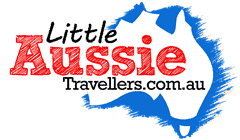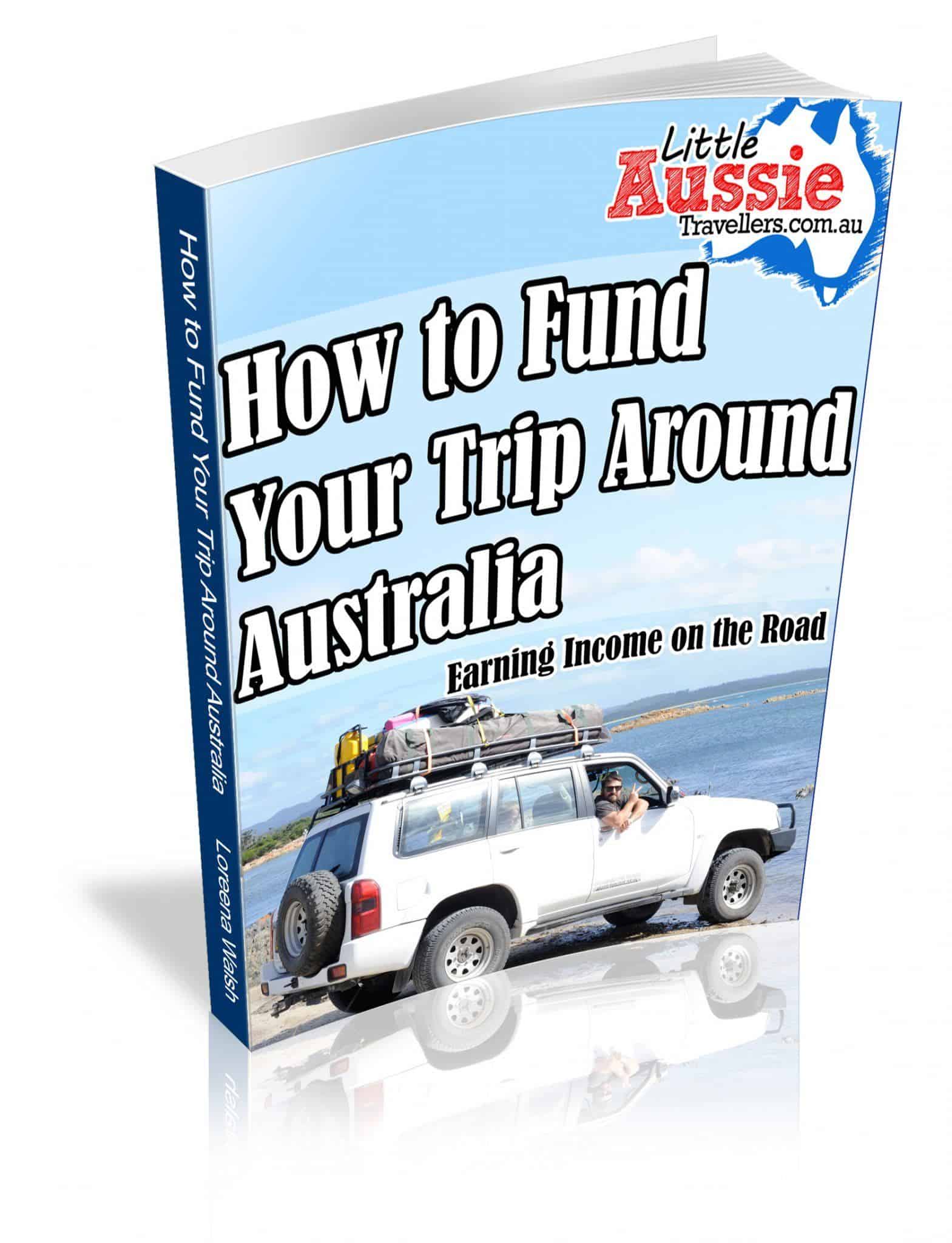
by Loreena Walsh | Featured Posts, Indigenous Culture, TAS Destinations & Activities
I’ve written many times about how we fell in love with Tasmania, but perhaps one thing I haven’t spoken enough about, is the Indigenous history of Australia’s island state.
There’s a reason for that; during our 3 months in Tasmania, although we learned a lot of history, I’m sad to say we didn’t learn much about Tasmania’s first peoples. There were snippets on a couple of signs, and a small amount I managed to track down at Port Arthur, but sadly I don’t feel there’s enough information in general tourist areas. There may be more accessible information on Flinders Island, Bruny Island or Maria Island but we didn’t make it to any of those, so perhaps that’s why we didn’t see more?
As someone majoring in Indigenous Studies, and because I wasn’t satisfied with what I learned, I’ll tell you what I know myself, and I hope, if you visit, you’ll track down something wonderful and send me information. I do intend to re-visit Tassie and track down more for myself.
I set off on our adventure keen to uncover how settlement may have affected Indigenous peoples in Tasmania, who before settlement knew the island as lutruwita (lu-tru-wee-tah). In 1803 settlers arrived to form Australia’s second British colony at Risdon Cove, and it was named Van Diemen’s Land as part of the New South Wales settlement. In 1856 the island was granted self-government and the name officially changed to Tasmania. Of course, I realised that just like every part of Australia, settlement was likely a destructive time for Indigenous populations, but how destructive? What happened? Did any clans survive on their own lands? What was the initial reaction from either side?
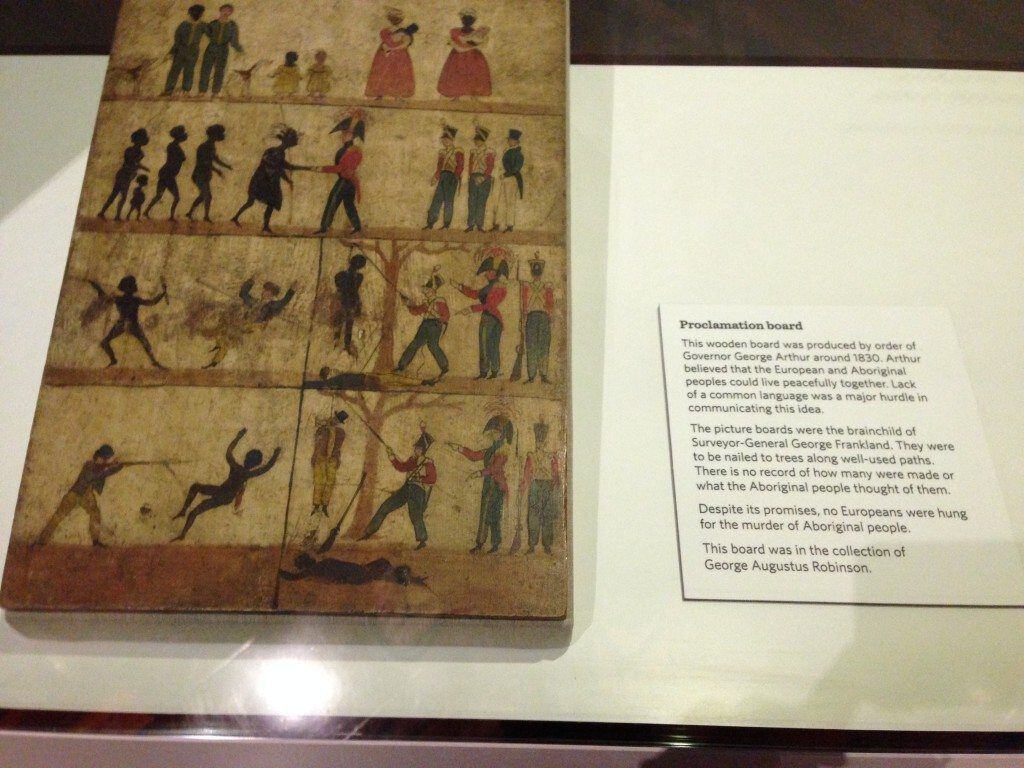
Unfortunately, the story isn’t a kind one.
Before settlement it is believed there were nine Indigenous Nations living on Tasmania, who traded with European sealers with very little animosity, but once settlement began, Indigenous peoples were pushed off their lands in order for settlers and convicts establish colonies and farmland. Land would be fenced off and distributed for farming and cropping, but when Indigenous peoples rely on their homelands for food and water, to fence this off means desperation and lack of ability to survive.
If you’d been living peacefully on lands for no less than 35,000 years and all of a sudden found your lands fenced off resulting in your family starving, what would you do? Of course you would need to fight, you would be driven to fight; fight for the right to eat, and stay alive.
Most people don’t understand that for the most part, Indigenous Australians were not historically a nomadic peoples, instead they existed in designated lands which they cared for and used to sustain all they needed, sometimes trading with neighbouring Nations for tools or foods they may not have access to on their own Country. So it was not as simple as being kicked off one area of land by settlers and moving on to somewhere else, Indigenous peoples could not just take over someone elses lands. Sadly this is the theme right across Australia, not just Tasmania, but on an Island state so small, losing lands would have had horrific consequences.
Lieutenant-Governor Arthur declared martial law in 1828 resulting in Aboriginal clans being forced out of areas and away from white settlers, murdered or incarcerated. Those who were not forced out were decimated by European diseases which killed many Indigenous peoples who had no immunity to such health issues.
Surviving Indigenous Tasmanian peoples were forced onto Bruny Island, Flinders Island, and other areas, where most died due to poor conditions and disease, before a settlement at Oyster Cove was formed and those who survived were mostly left to their own devices there.
There is, today a Tasmanian Indigenous population who have worked hard to revive and continue Indigenous language and connection to land and culture, so as proven right across Australia, our First Peoples are resilient and determined and this should be celebrated.
My Most Treasured Indigenous Insight While In Tasmania.
One area we did visit that holds Indigenous significance is Recherche Bay.

Many people would have heard of Truganini (1812-1876), a brave and amazing Aboriginal woman who survived the destruction and decimation of her peoples, caused by white settlement.
Truganini was born in Recherche Bay, daughter of the leader of the region. While much of Truganini’s family were brutally killed, Truganini travelled with her partner Woorraddy who accompanied George Robinson, serving as a guide and interpreter, during attempts to relocate Indigenous populations to several island settlements. During this time, Truganini became disollusioned with Robinson’s mission, realising that his attempt to remove and relocate Aboriginal peoples would all but remove the chance for traditional Indigenous life in Tasmania, and instead urged her peoples to stay and with them settled at Oyster Cove.
Truganini passed away in 1876, and is believed to have been the last surviving full-blood Tasmanian Aboriginal person. While fighting occured when her remains were recovered from the Hobart Female Factory site in 1878 after much protest and fighting, in 1976 her ashes were scattered on the D’Entrecasteaux Channel, fulfilling her wishes almost one hundred years after her death.
I, stood, one small person looking out the the D’Entrecasteaux Channel, and Recherche Bay, and with my standing, felt the gravity of settlement, the pain of a peoples who did not ask for us to be here, and the pain of one woman who fought for survival for herself and her peoples.
In all this sadness I felt a renewed hope that as a country we can move forward. We can never undo what has been done during the devastation caused by settlement, but we can be mindful and reflection and acknowledge that while we have grown into an amazing country, this has not been without loss and pain.
Together, as a united country we must not lose sight of the most important part of this country. The land. It has nurtured a culture now considered the oldest continuing living culture in the world, and we must care for the land so it continues to nurture the people who now call it home.
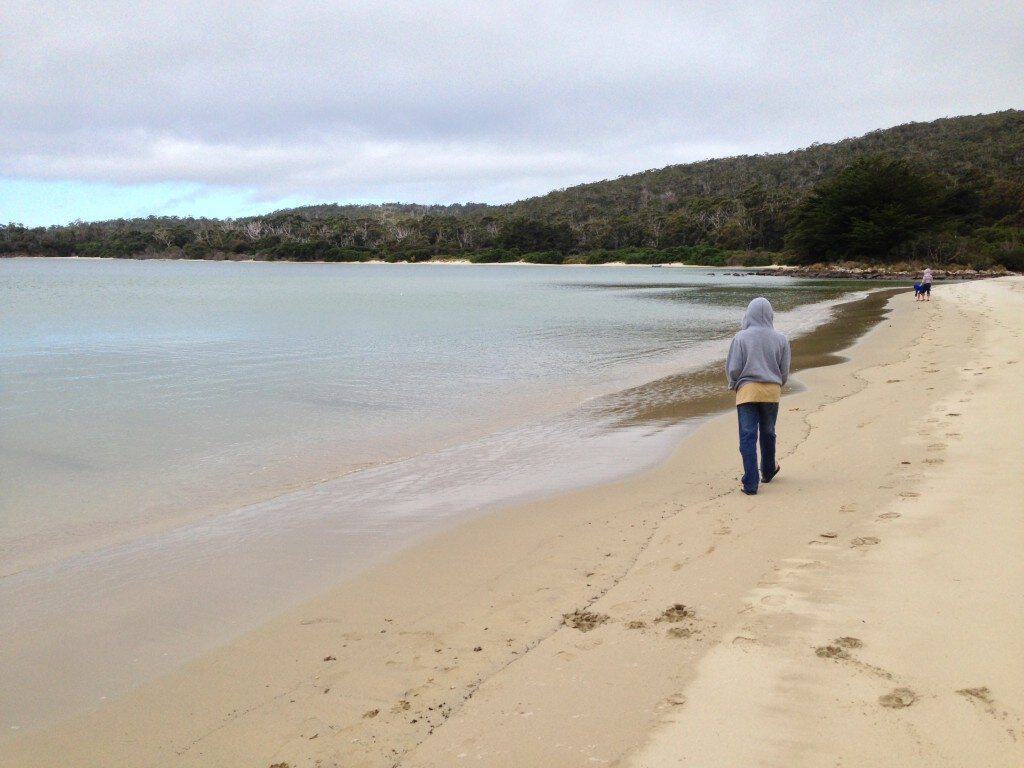
Do you have an interest in Indigenous History or special memories of Tasmania? Share below.

by Loreena Walsh | Indigenous Culture, NSW Destinations & Activities
You’ll rarely hear me call Kempsey home. I wasn’t born there, but I did live there through my teenage years, and I met Matt there (during our highschool years), but for little fault of it’s own, Kempsey has never really felt like a positive place for me.
It was where I got my first job, my first boyfriend and completed highschool, and where I always felt I’d “escaped” from, as soon as highschool was over.
I’ve begrudgingly returned back on many occasions, swearing it was a place I’d never live again, stopping in only to visit family.
You know what’s sad about that?
Kempsey and the Macleay Valley Region is an amazingly beautiful place.
We’ve been back in the region longer than we’d planned, and we’ve been making the most of it. We’ve been heading to Crescent Head regularly and I love that little town; it holds memories of my teens and it’s a stunning place to let the ocean soothe your soul. We’ve been swimming in the river; the same one I spent many summers cooling down, even though the water levels are really low at the moment, the kids had a great time, and we’ve experienced some wonderful community events.
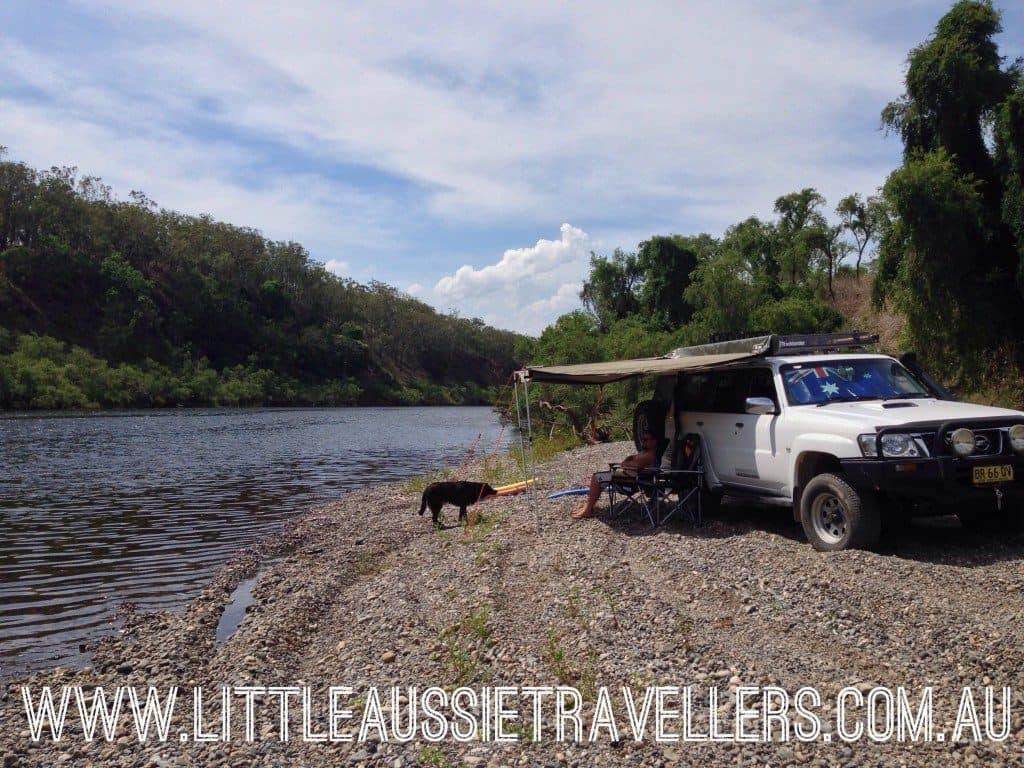
But, while I’ve always felt quite a negative attitude to Kempsey, I’m glad I’ve had the chance to have my mind changed, and I’m happy to eat my words!
The Macleay River Festival.
We’ve taken the time while we’ve been here to get out and about and enjoy some events within the community, and what can I say, but I am so glad to see such positive events taking place in Kempsey. I’ve written before about the joy I feel in learning about Indigenous history in this region and others, and after doing some reading I found this festival was a celebration of the river, of Indigenous peoples appreciation of the river, and also the joy and importance the river has in contemporary society today.
Kempsey was settled on the land of the Dunghutti, “of which there are four tribes Dangaddi, Dainggati, Thungutti and Djunghatti” (Macleay River Festival, 2014)
The river is a central part of Kempsey; it sustains life, it brings devastating flooding, it is mother nature at her most beautiful. It was wonderful to see, that in the spirit of the river, the community of Kempsey connected, together, celebrating, as one peoples.
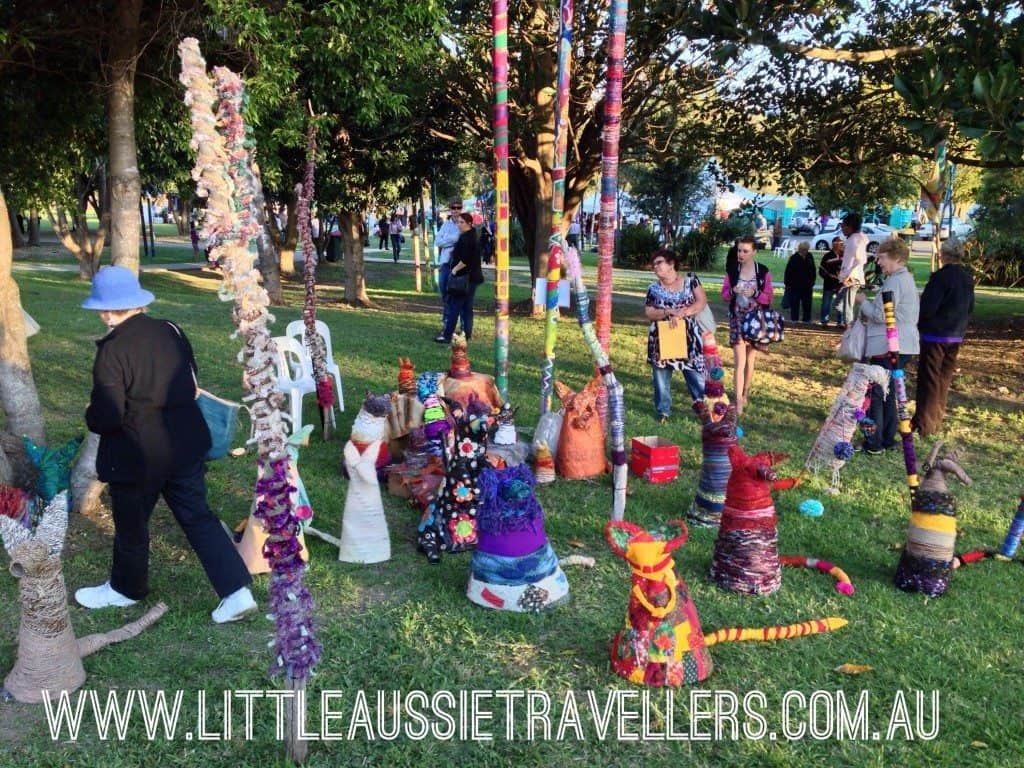
The festival was inspired as a celebration of the river, the area and the Indigenous peoples that have called Kempsey home for thousands of years. From the festival website:
“festival aims to showcase the spirit and diversity of culture and experiences in the Macleay.”
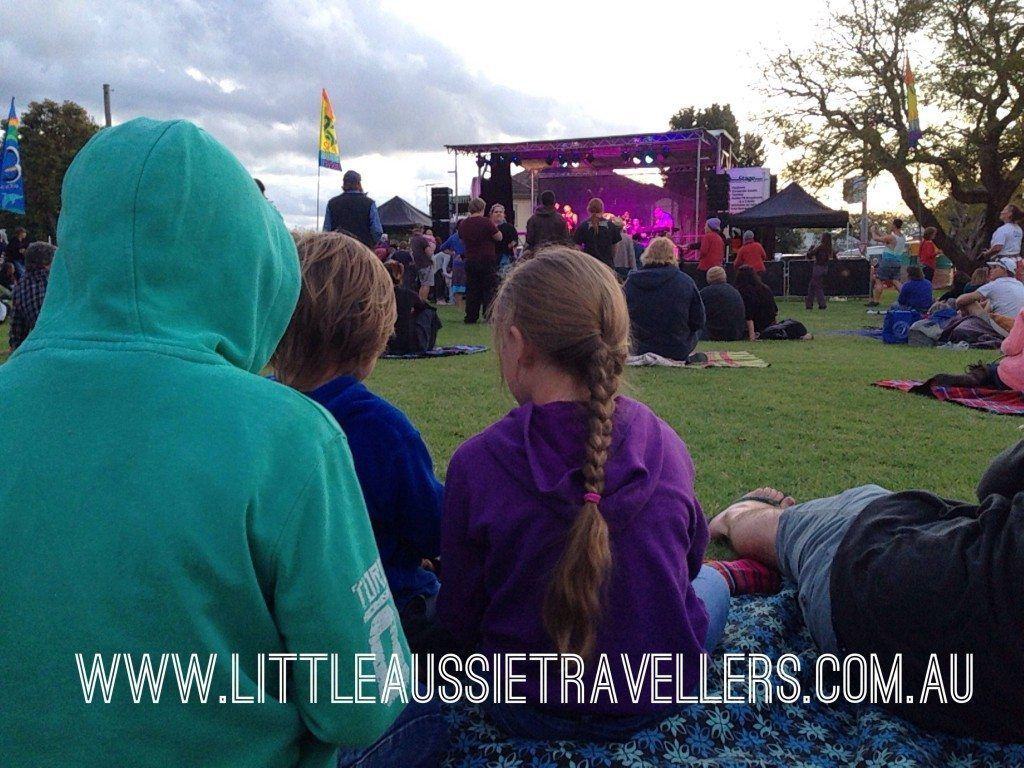
Well, what can I say, but the festival was an amazing success. With an amazing mix of culture, art, markets, music, comedy, local performers and a relaxed laid back atmosphere that families could enjoy, we all had a wonderful time.
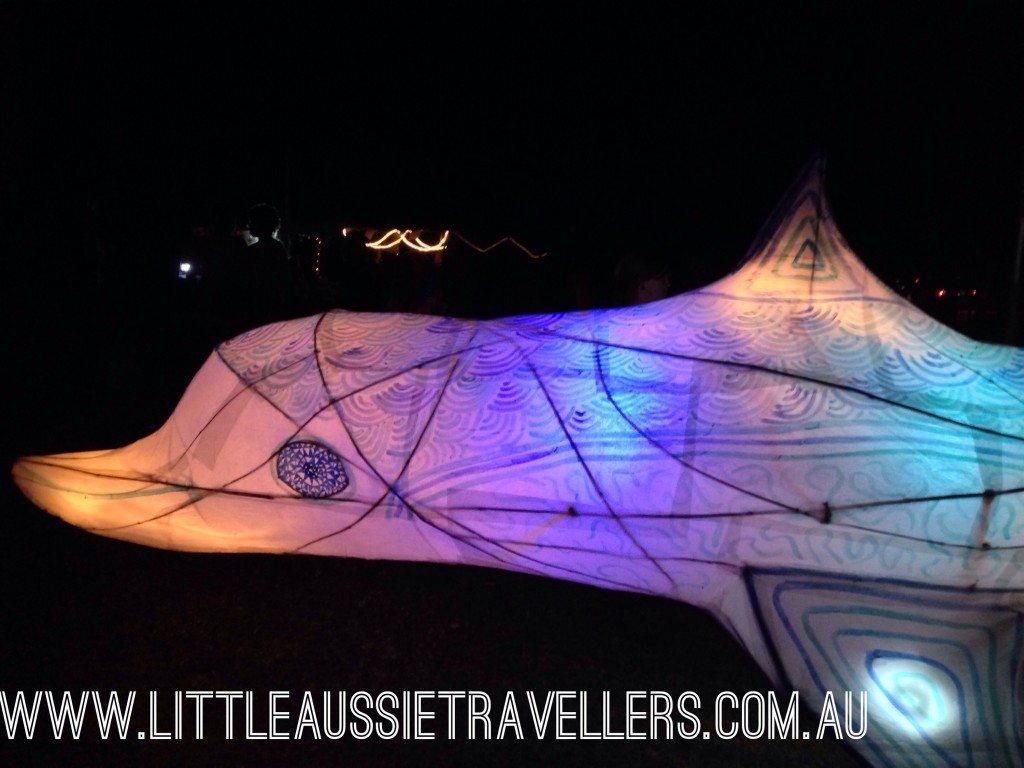
While Kempsey may be an area that has had it’s problems, and suffers many of the same issues that other low socio-economic towns experience, seeing the community togetherness and celebration was heartwarming and a positive sign that the community can strengthen and create a wonderful culture of togetherness and joy in the natural beauty the region offers all people who live here.
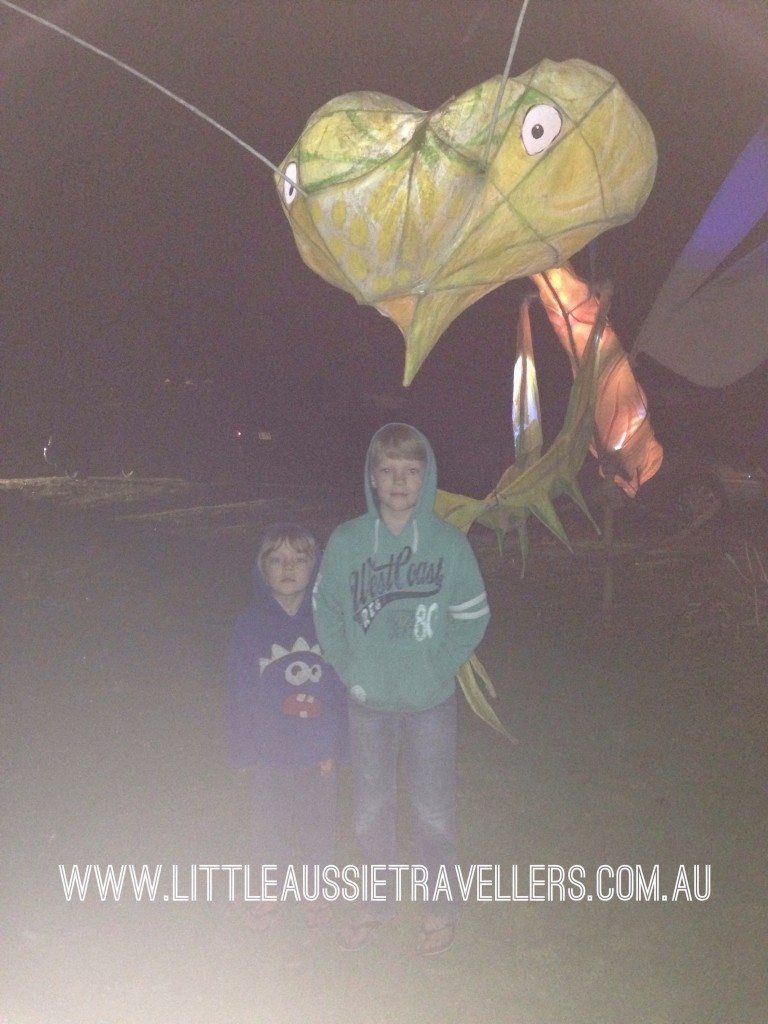
Kempsey Twilight Market
We returned back to Riverside park in Kempsey to watch the fireworks that were some of the best we’ve ever seen for the Kempsey Twilight Market. The markets are always a wonderful mix of food, craft, clothing and art as well as nick-nacks and entertainment. I did a little clothes shopping, and even in the rain, crowds gathered to watch entertainment from local school students, and the fireworks seriously went for what seemed like forever and the kids were over the moon.
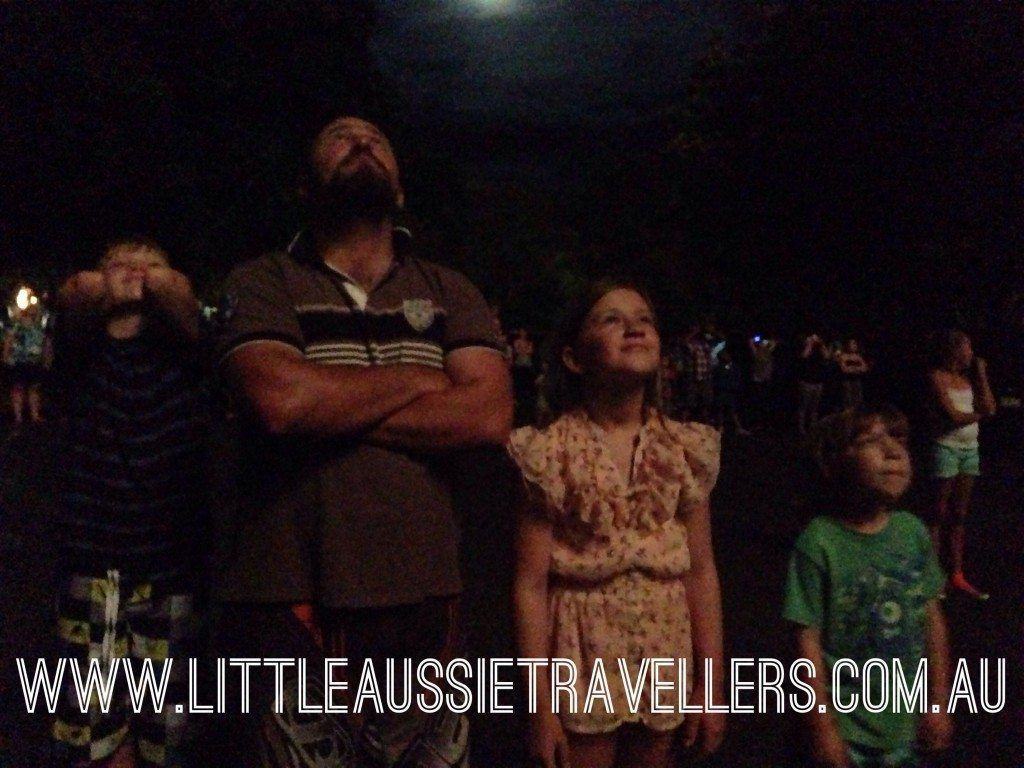
So I have to admit, I’ve admitted, I’ve been a bit rough on Kempsey all these years…..
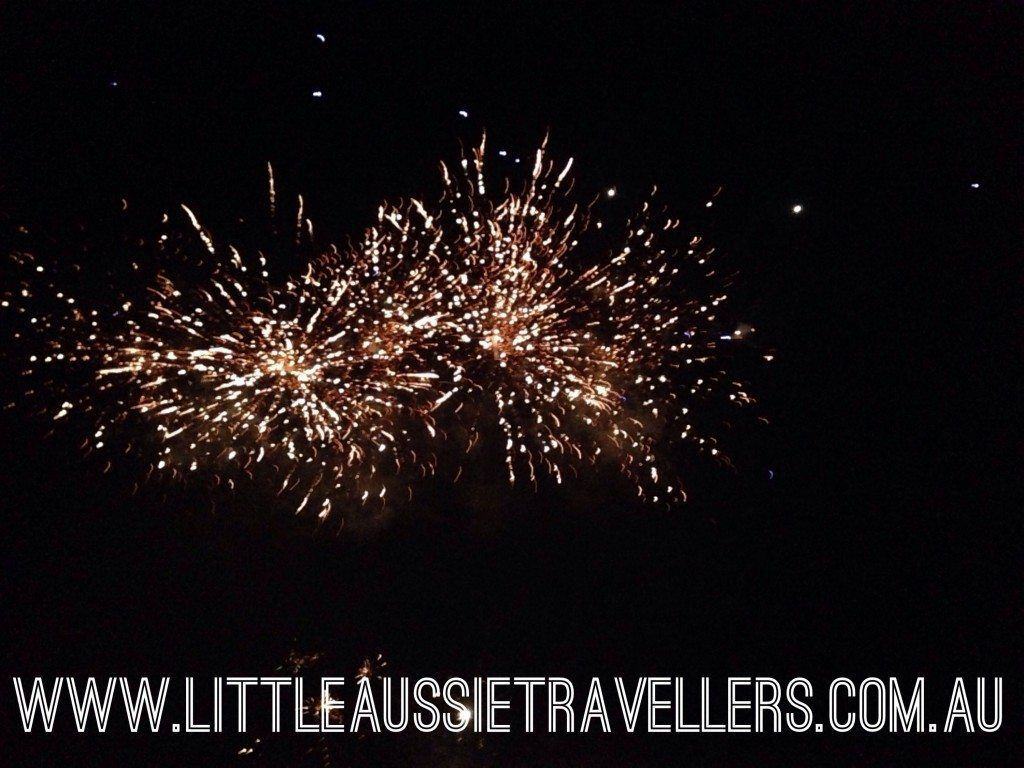
When you’ve spent years being stubborn and being negative about a region, sometimes it pays to give it another chance. There is lots about Kempsey that’s great, and I’m glad we’ve had the opportunity to see it all with fresh insight.
So, if you’re visiting the Mid North Coast of NSW, then be sure to stop in and visit.
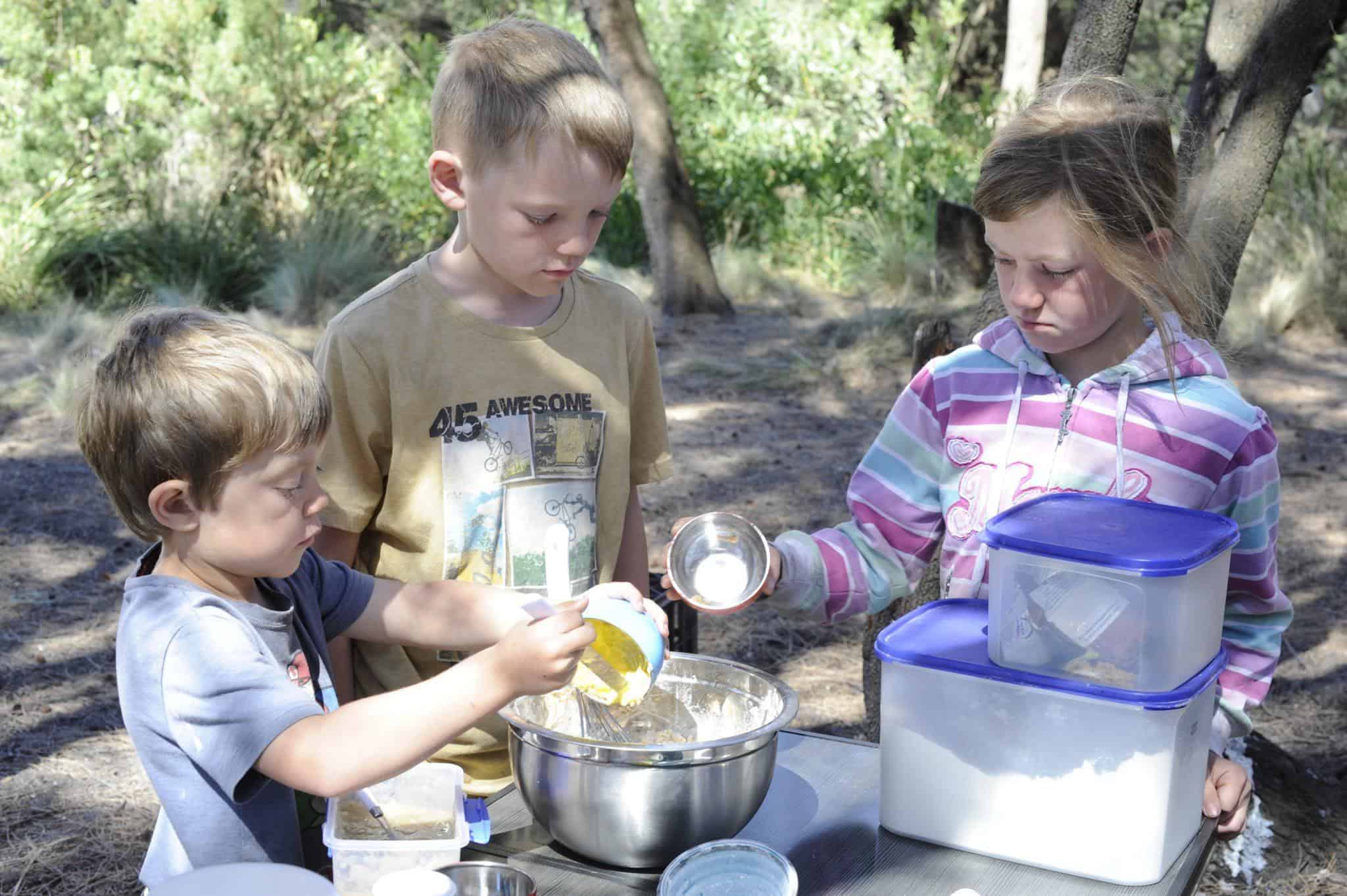
by Loreena Walsh | Australian History, Food
Cooking damper is something we do every night when we’re able to have a camp fire, and we get really surprised by how many people don’t know how to cook damper, or are worried about getting it wrong.
We’ve written about cooking damper here, and you can buy our damper cookbook from Kindle (other formats coming soon), but for today, here’s some information on the history of damper.
Damper is one of Australia’s most iconic symbols of bush life.
It was made famous by drovers, who baked this bush bread in the coals of their camp fire, and has been recognised as a staple of bush life for decades.
It is believed that Damper was originally developed by stockmen, who needed a way to carry food with them into remote areas. They’d sometimes be away for weeks at a time with little or no access to supplies, so weren’t able to carry foods that would spoil. Damper, in this case, provided them with a filling food option they could cook easily.
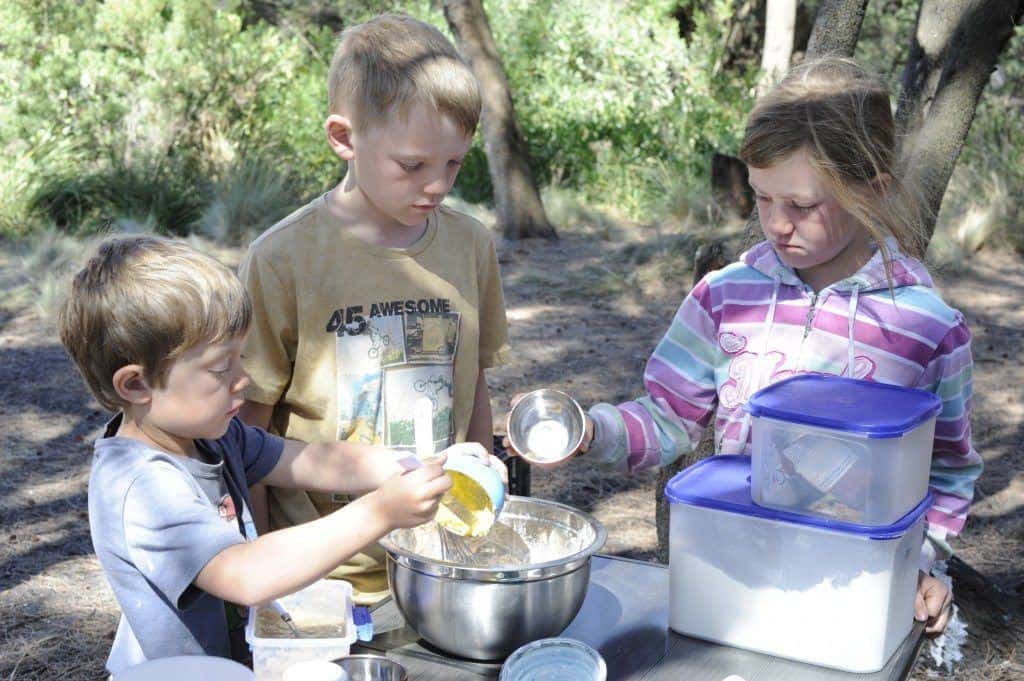
By simply carrying flour and salt, and having access to water, drovers and stockmen could cook their own bread, using these three ingredients. Traditionally the dough would be cooked straight in the “damped” coals of the camp fire, which is where many people believe the name damper originated. Alternatively, wrapping the dough around a stick and holding it over the flames until cooked was also a common way to cook.
Over the years, it became common to cook damper in cast iron camp ovens, and this is still a common method used today. Recipes have evolved to include the addition of milk, butter and lots of other additions. We’ve included tasty and fun variations in our recipes, and we’re sure damper will remain in Australian life for years to come, especially with its ease of preparation and cooking and the never ending variety that can be achieved.
Whether it’s over the camp fire, or in your home oven, damper is a fun, easy bread, and a great accompaniment to a tasty meal.
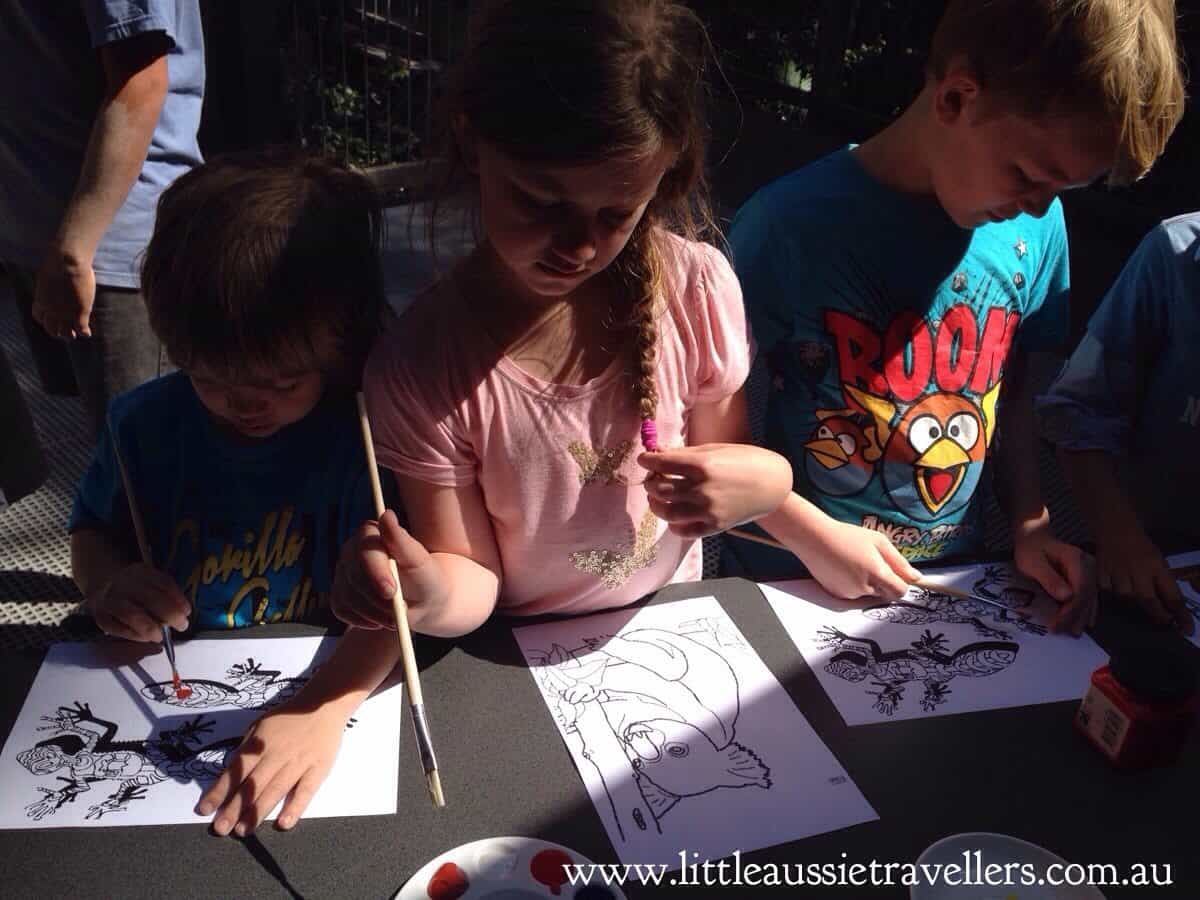
by Loreena Walsh | Indigenous Culture, NSW Destinations & Activities
The best kinds of days are those you think are going to be good, and instead they end up being great. Today was one of those days. We were treated to an afternoon of Aboriginal culture, music, art, craft and great conversation with some wonderful, amazing hosts. We took part in Sea Acres Rainforest Centre’s “Aboriginal Art in the Rainforest” activity.
I’m beginning this blog post with a big hello to Aunty Rose, who took details of our blog with her today so she could take a look. Hi Aunty, and I hope you enjoy looking around the site. Then, another huge thank you for being so welcoming today to local artists Aunty Debb Robinson, Aunty Leah Bale, and Russell Moran you all ensured we had a wonderful afternoon full of both education and lots of fun!
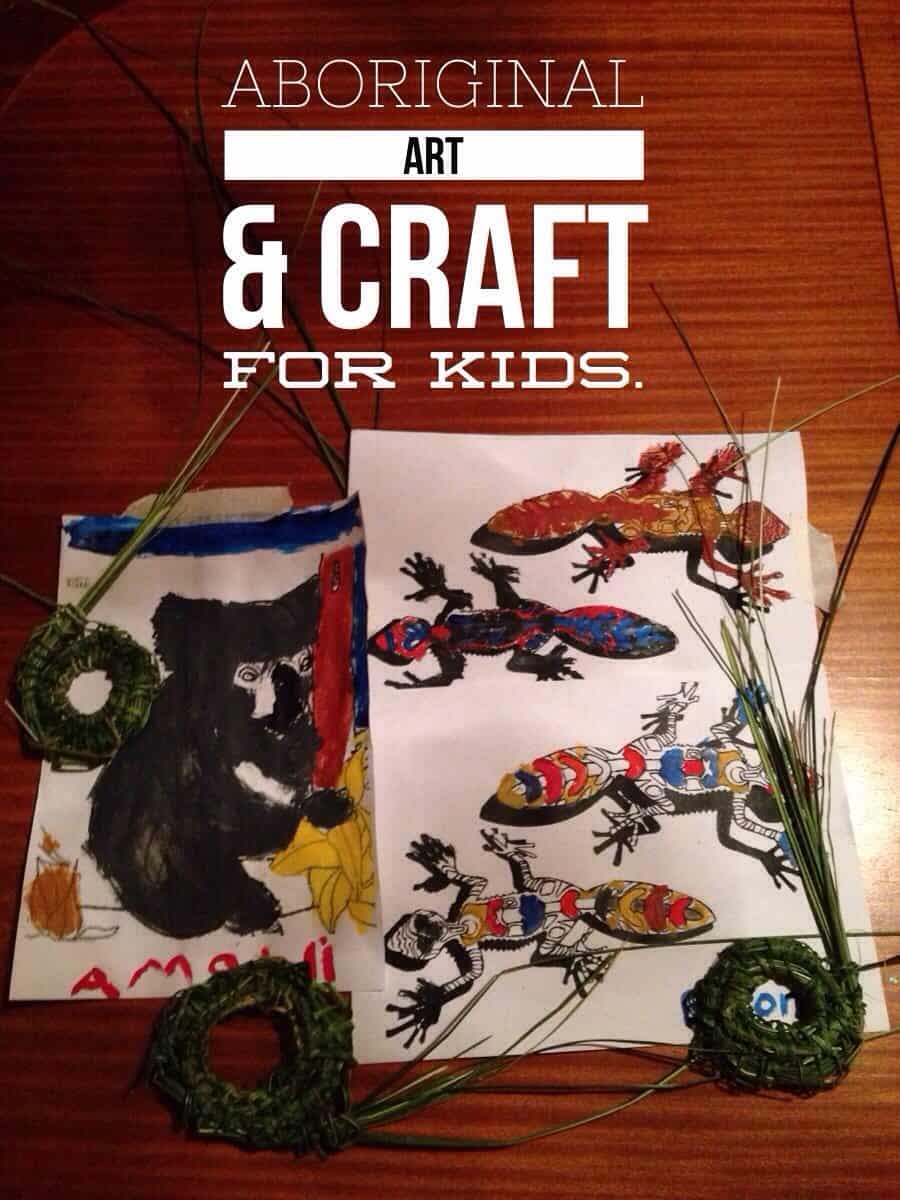
As some of you will know, I returned to University a couple of years ago to do my degree in Indigenous Studies. This decision was driven by my respect and passion for the amazing Aboriginal culture, hunger for knowledge and understanding, and the ability to ensure that I can be a positive part of ensuring that Australia does not lose this amazing history, and above all that my children grow up with respect and knowledge.
My belief is, that no matter what your cultural background, it is important for every Australian to embrace Aboriginal culture and celebrate the stories, beauty and spirit of the lands on which we all live here in Australia. So, when I get the chance to celebrate, share and learn about our home region with my kids, I always love to do the activities at Sea Acres Rainforest Centre.

We received a welcome to country from Russell, and did some singing along with Aunty Debb, who is a great singer. Then we were treated to the Kamilaroi people’s story of the “Emu in the Sky” which gave me goosebumps. The Emu in the Sky story shares knowledge of the changes to the milky way, and the connection of the appearance of an Emu amongst the Milky Way and the breeding cycle of the Emu on the land. These changes would signal to the Kamilaroi when they could collect emu eggs, and when they must stop. We also learned how the Koala lost his tail.
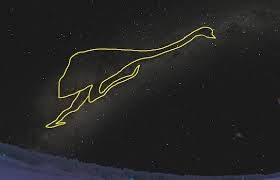
No matter how many dreaming stories I hear, I am forever in awe of the connection of the plants, the waters, the stars and planets and the animals on the land. Everything is so connected, and I wish people in general understood and appreciated this more.
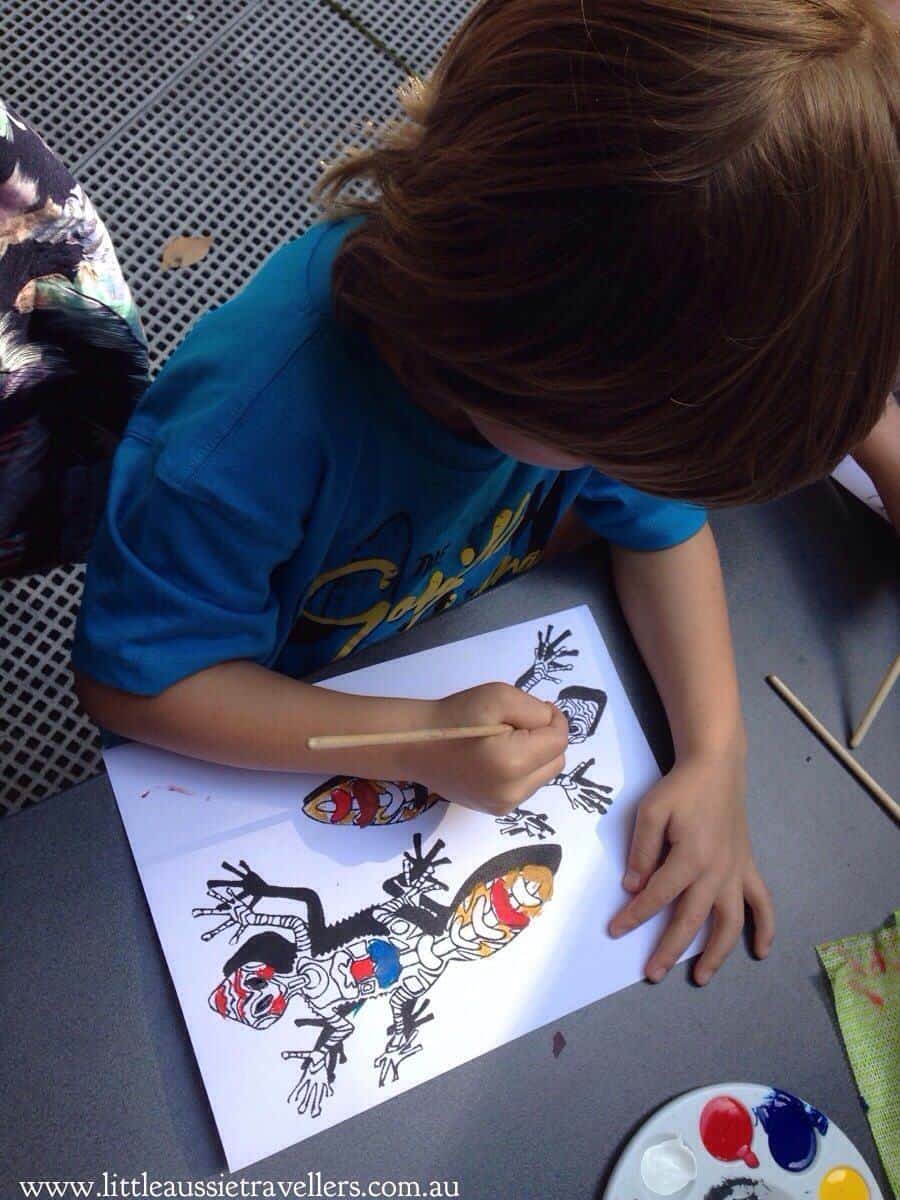
The kids really enjoyed doing painting activities of native animals, the boys in their usual style chose to paint geckos. They still miss our pet reptiles and are forever on the hunt for snakes and lizards while they are out exploring so it was an easy pick.
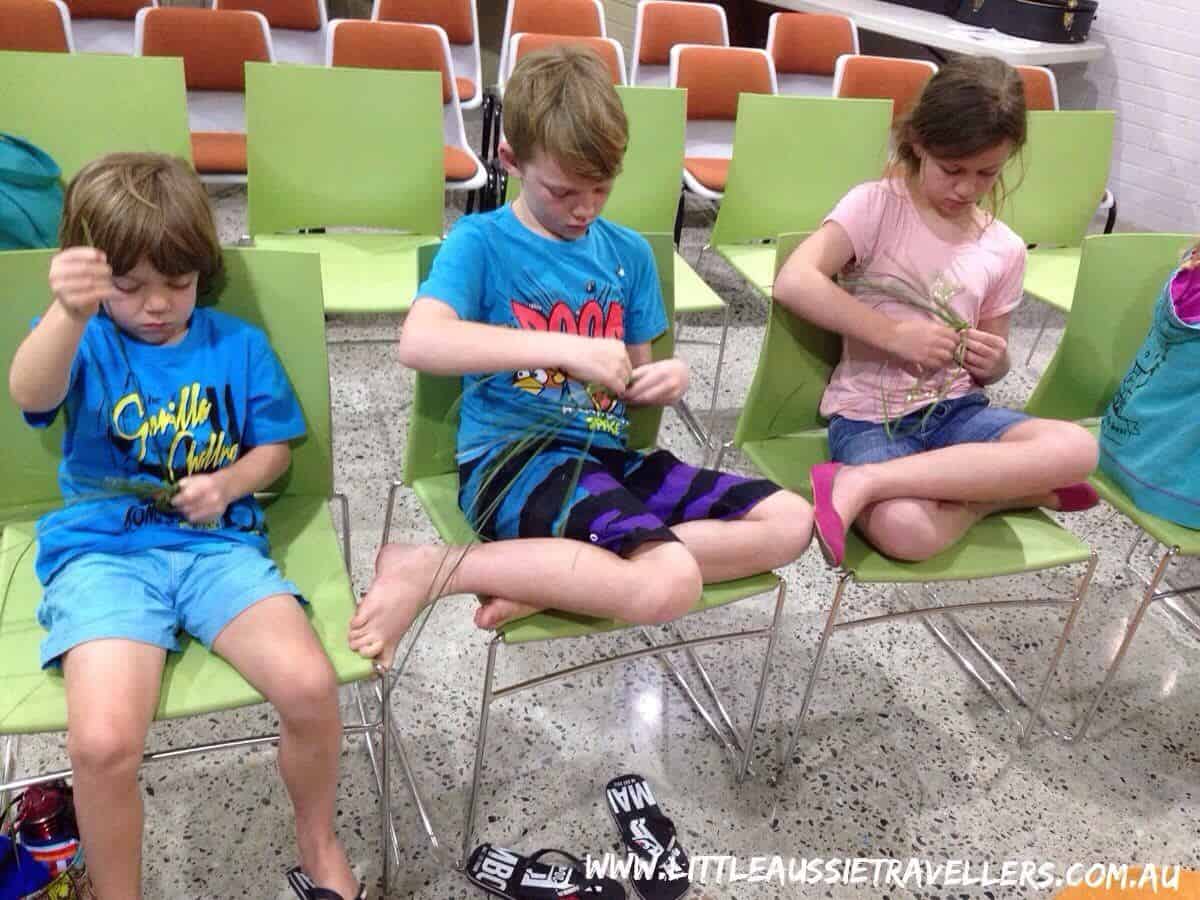
My personal favourite part of the day was the weaving workshop. Our first visit to the Northern Territory was the first time I saw weaving, and from that moment I was in love with the earthy beauty of bowls, bags, floor mats, wall hangings and all of their variations, woven by hand.
I have longed to learn the art of weaving, and I was overjoyed to get the chance to learn, alongside the kids and it was so much fun. Aunty Leah was telling us of a weaving project that stands as tall as herself, which took her three months to complete. Our first efforts aren’t particularly neat, but we’re definitely going to try harvesting our own Lomandra and getting in some more practice. It is a lovely, calming activity and my soul was as happy as I thought it would be, finally gaining an understanding of the process.
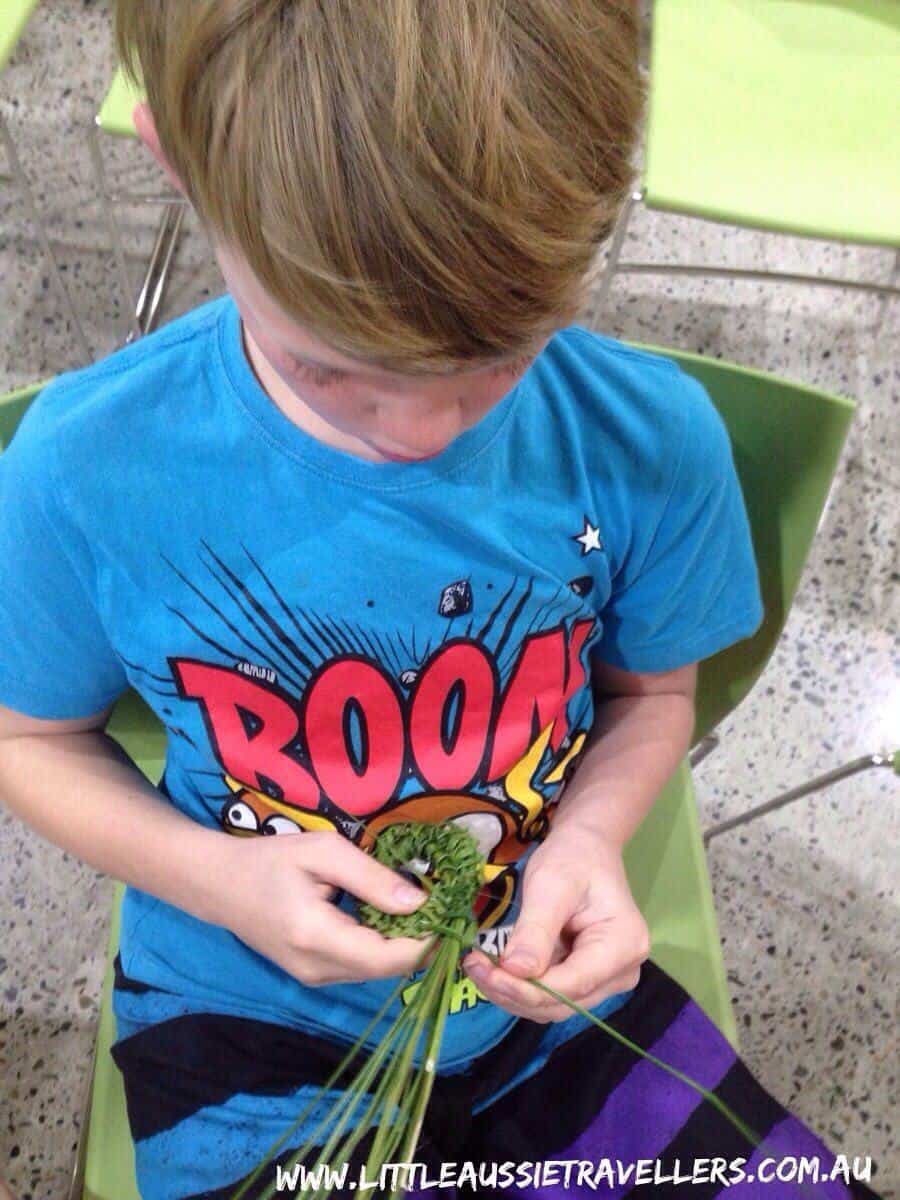
So, if you’re ever in Port Macquarie or surrounds during the school holiday period, then I can highly recommend taking part in any of the cultural activities on offer. We’ve been before and we’ll return again if we’re in the area.
A huge, huge, huge thank you again to Aunty Debb, Aunty Leah, Aunty Rose and Russell. I had a great day chatting to you all, and the kids had a wonderful day learning and doing the activities.
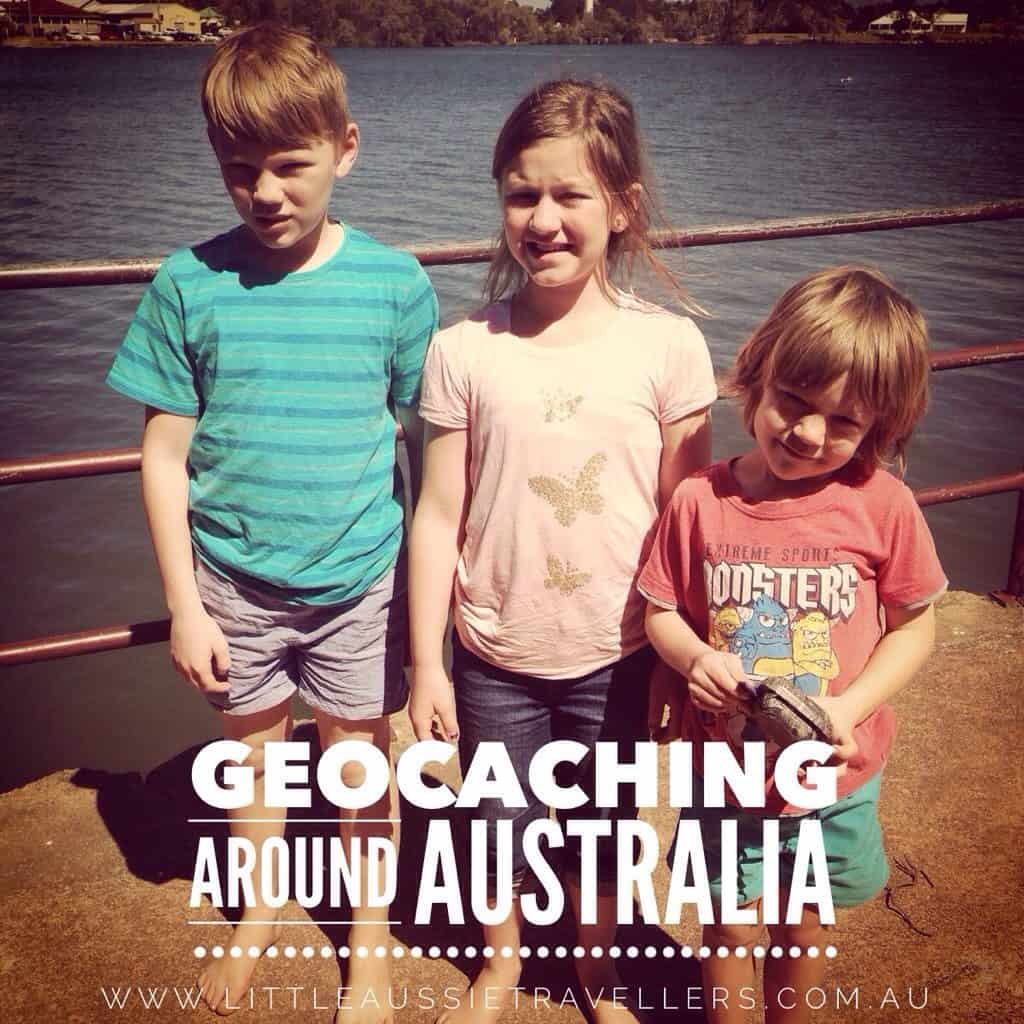
by Loreena Walsh | Family Geocaching, Featured Posts
I know, I know, our posts are terribly sporadic, but as usual, life gets busy and blogging becomes secondary to everything else going on, but you definitely need to know about our latest obsession; geocaching.
If you look at the container in Byron’s hands on the right, in the photo below; that is a geocache. It’s like a worldwide outdoor treasure hunt, and it’s a perfect activity for the entire family. We’re now official Geocaching around Australia with Kids 🙂

It’s something we’d heard about years ago and had always said we “should” give it a go, but we’d never really bothered. Oh, how I wish we’d started earlier because it is absolutely the most fun thing we’ve undertaken as a family.
Because our travels have been a bit halted with the caravan renovation, we really needed something to add a bit of excitement for the kids, and it turns out geocaching is just that bit of fun we needed.
The kids had no idea we were heading out to have a little fun, we told them we were heading to the grocery store and piled them into the car. As we pulled over on the side of the road, with no idea what they were doing, we gave them clues about what they were looking for, and our first ever geocache was in their excited little hands.
The first day we set off to do a few that are close to where we’re staying. We did our first one on the way into town, located another small one in town, which offered a bit of a challenge and had all five of us stumped for a little while, but we had success after about 20 minutes of searching. Then, after a quick stop at the grocery store, we did another one on the way home.
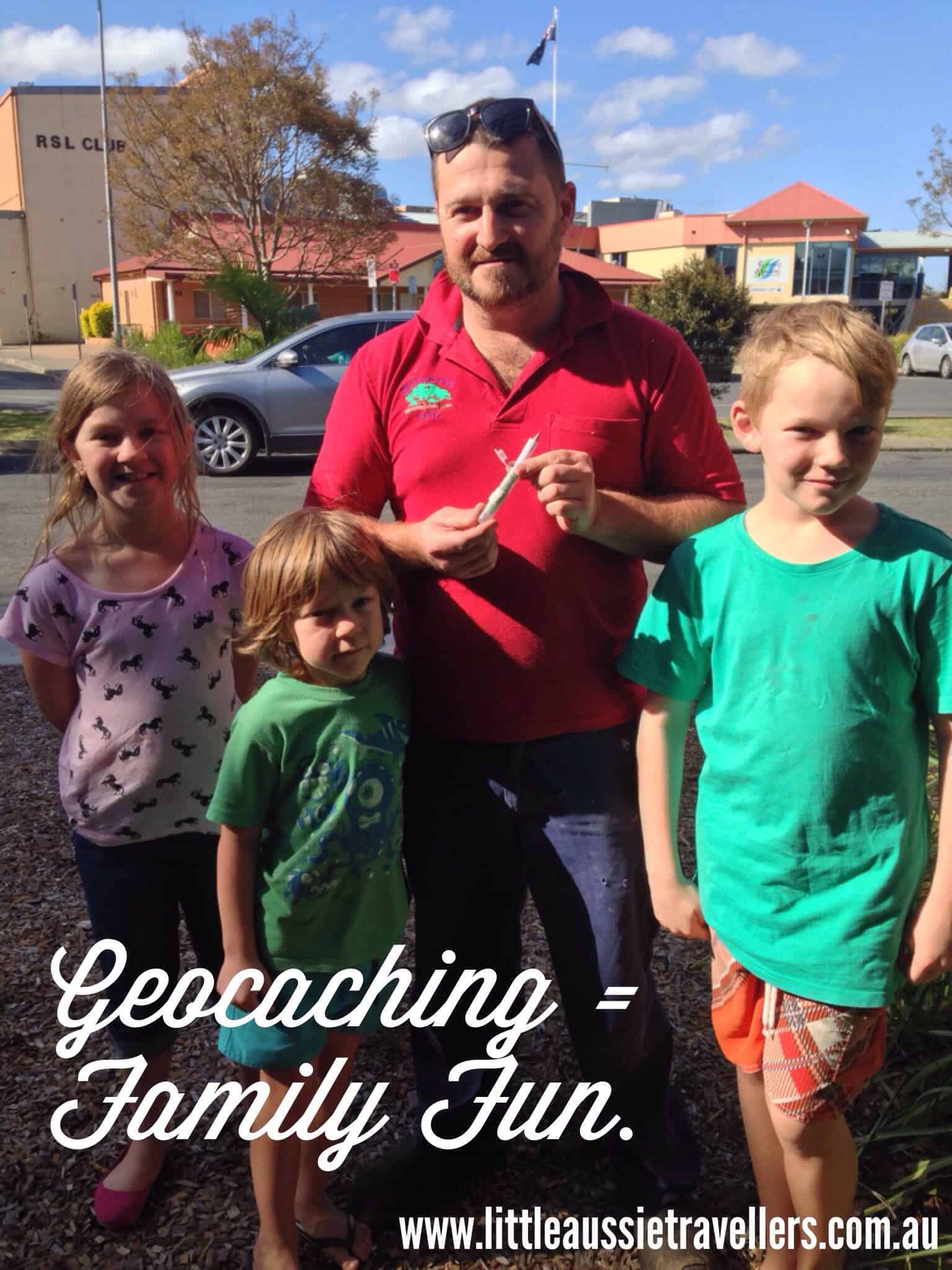
It’s added a new dimension to our travels. A few days ago we were on a road trip to visit family, and we sussed out what geocaches would be available on the direct route to where we were going, and planned to do a couple of stops on the way.
The kids now keep a zip-lock bag of little goodies in the car, because there are caches that have the option to swap something out, and they are very enthusiastic about knowing if there’s caches in the direction we’re heading during trips anywhere.
So, if you don’t know what geocaching is, or haven’t given it a go, here’s some details to get you started. It’s really a lot of fun, and we’ll now be geocaching our way around Australia.
What is Geocaching?
Geocaching is like an outdoor treasure hunt, so you can see why it’s perfect for kids and families. Caches are hidden in places all around Australia and the world. Using a handheld GPS or your mobile phone, you use the GPS coordinates to try and track down the cache. They can be a variety of sizes and difficulty levels. Some contain nothing more than a log sheet that you sign to say you’ve been there. Other caches are larger and contain trinkets and goodies left by others, these allow you to swap out something in there and replace it with a trinket of your own for someone else to take later.
Who can Geocache?
There’s a massive worldwide geocaching community. If you love a bit of a challenge, a surprise and getting outdoors in a really fun way, then geocaching could be the activity you’ve been looking for! We think, for families it’s the perfect way to spend time together, face challenges and have a fun result at the end.
How do you get started with Geocaching?
We downloaded the free version of the official geocaching app from the iTunes app store. We found our first few caches using the free version and then updated to the paid version so we could use the extra features such as being able to search for geographical areas we were heading too, not just being limited to where we currently were. We suggest you take a look at the Geocaching 101 area of the offical website, and start from there.
So, please let us know if you’re a geocacher or if you’re planning to start, we’d love to hear your stories, leave us a comment below.
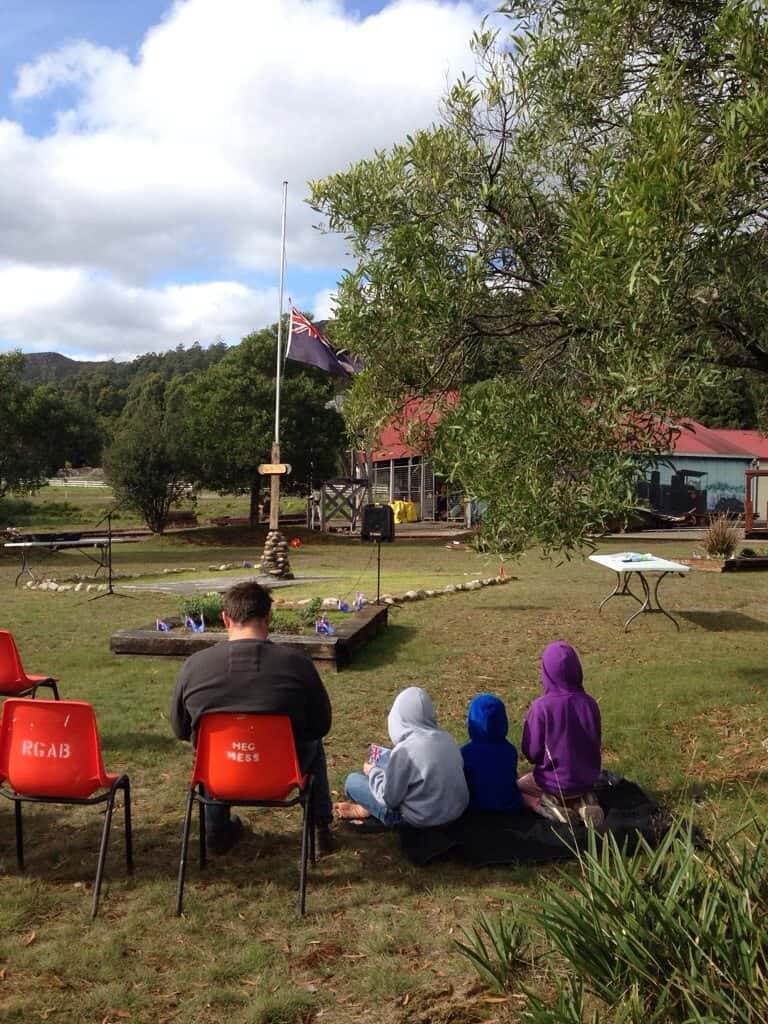
by Loreena Walsh | Australian History, TAS Destinations & Activities
ANZAC Day services make me sad.
They bring tears to my eyes and I feel pain for all the families who have suffered heartache at the hands of war.
Regardless of my own sadness, we make a point of attending each year, as a family. We feel it’s important for our children to understand the history of our country and there’s no dodging that war has been a part of that history, and is still a part of life for many Australian families today.
We are staying near Tullah in the West of Tasmania at the moment, so we took the time to attend the ANZAC Day service in this small community today. It was their first ever ANZAC march, and they were so glad to have been awarded a grant to finally erect a cenotaph in memory of their fallen which will be in place for next year’s service, so it was a lovely experience to be part of.
To all the men and women who have served or are still serving for our country, thank you. To all those families who suffered loss, we are grateful for the freedoms afforded us by your loved ones.
Lest We Forget.


